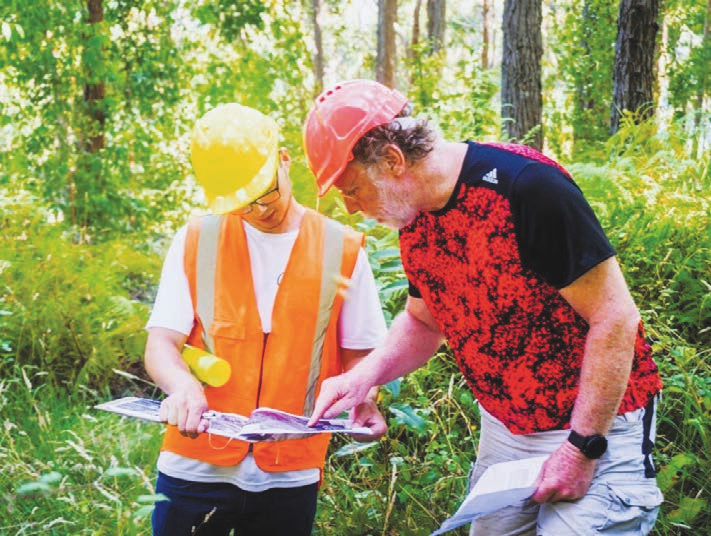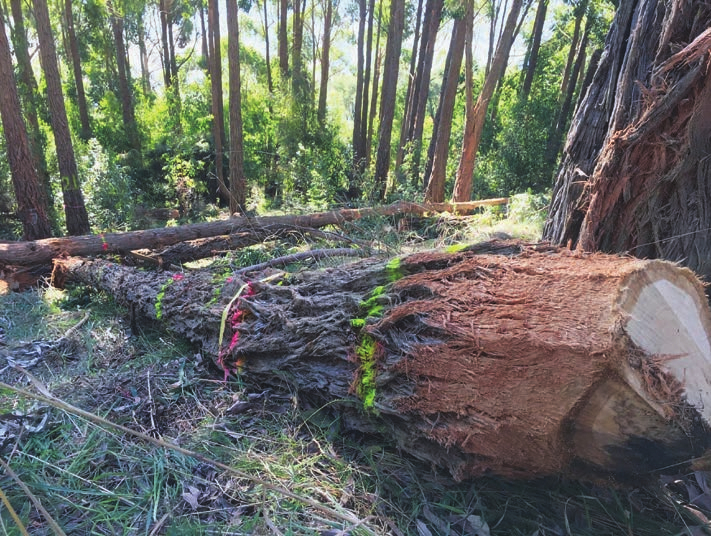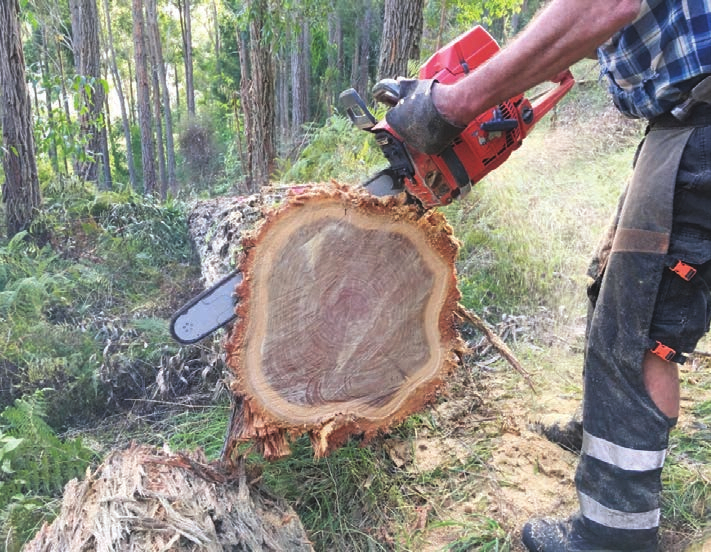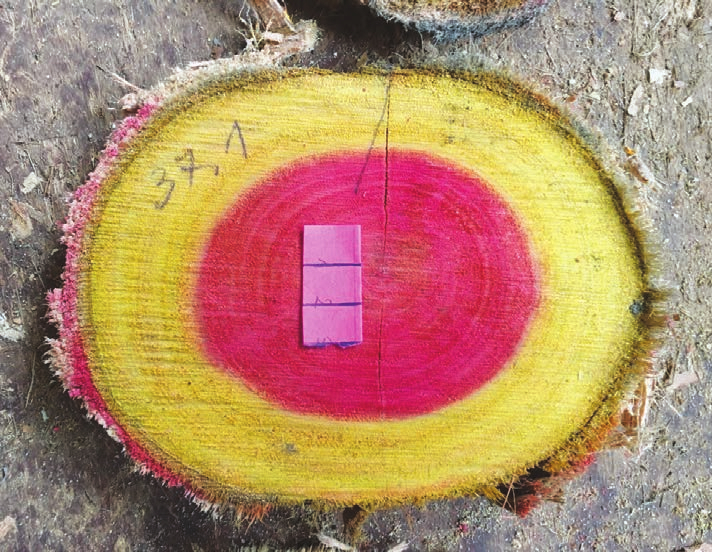
This is free.
Predicting the shape and volume of Eucalyptus globoidea heartwood
Daniel Boczniewicz and Euan Mason, New Zealand Tree Grower August 2022.
This story starts in Marlborough, New Zealand’s largest wine region. To protect vineyard wood posts against decay when in contact with soil, most are given a copper chrome arsenate treatment.This is a toxic substance and disposal after breakage can be difficult because wood treated with copper chrome arsenate is hazardous waste.
Many wine drinkers would prefer to purchase wine from grapes grown in vineyards that used posts which do not require such treatment. The same treatment is routinely applied to pine fence posts and poles. If a naturally durable alternative was available many other growers currently using treated pine, such as farmers, apple and kiwifruit growers, will prefer it for their fencing and trellis structures.
Predictions
The research focuses on durable eucalypts from which timber provides a naturally durable alternative. After studying New Zealand-grown Eucalyptus globoidea taper and volume, we have created a model which predicts the shape and size of the heartwood, which is the part of the stem suitable for durable posts.The research also provides crucial information about monitoring and maximising heartwood production.
Individual tree taper and volume equations are essential for forest management.They provide estimates of volume, using diameter at breast height and tree height.This data is incorporated into volume equations and also into growth and yield models to estimate volume per hectare in forest crops.
Taper models show the shapes of tree stems by predicting diameter at any given height. Compatible taper and volume equations mean that the same individual tree volume can be estimated from the tree volume equation.When logs are cut from a modelled stem in a stand simulator, the taper equation can be used to provide estimates of shape and volume of individual logs.This type of analysis allows growers to estimate value of their forests at harvest more accurately than if they simply had estimates of overall stem volume.
Equations
Durable eucalypt species such as E. globoidea have especially valuable heartwood. Therefore, managers require estimates of the volume and shape of heartwood zones within trees. Simple overall wood taper and volume equations would be inadequate.
In our study, 74 E. globoidea trees were destructively sampled in eight different trial plots throughout New Zealand. Tree ages were between seven and 29 years old, the diameter at breast height was between 11 cm and 67 cm and the height, seven to 35 metres. All trees were felled, with length and taper diameter outside the bark measured.To measure taper diameter of heartwood and sapwood, discs were cut at intervals along the stems. Heartwood and sapwood were identified by applying methyl orange dye and the quantity calculated using image analysis on a computer.
Taper and volume equations usually estimate all wood in a stem, but we wanted additional equations that would provide estimates of heartwood, sapwood, bark, and all of the stem including the bark. For convenience, people want simple, overall stem-wood volume equations as well as volume equations for different wood types. If estimates of all the component parts of a tree stem did not add up to the estimate in total stem volume it would be inconsistent.




Inconsistencies
To solve the problem, we used statistical methods which allowed us to make all the volume equations simultaneously, ensuring that there were no such inconsistencies. In addition, volume can be estimated either by a volume equation or by integrating a taper equation. In this way we ensured that all taper equations were consistent with the more easily used volume equations.
This means that a forest grower can use the simple volume equations to estimate the volume of total stem, total wood, heartwood, sapwood and bark. If they use taper equations to estimate shape and volume of logs cut from the stem, the volume of wood types estimated within all logs will add up to total stem volume provided by the simple equations.
Results from taper and volume were combined and used to create a spreadsheet which can produce tree shapes including three components of heartwood, wood inside bark and wood including bark.The user inputs the tree diameter at breast height and the overall height. If they are within the model range then the spreadsheet will show ‘OK’. If they are beyond the range of the model then the word extrapolated will appear. The height of the heartwood is predicted along with shape of different wood zones and plot predictions in graphs.
The graph above shows that as trees increase in size the proportion of heartwood increases. A further result from the model suggests that trees grown at wider spacing, and which have a larger diameter at breast height for any given height, will have a higher proportion of heartwood.This has been corroborated by studies in eucalypts in Australia.
New to forestry
The techniques we have developed to create these models are new in forestry and we see potential to develop similar ones for other species such as totara, Robinia, a range of durable eucalypts and those which have valuable heartwood.We have made a preliminary model for E. bosistoana from a small sample of trees that suggests the two species may differ markedly in their capacity to grow heartwood.
Further steps in this research are to make the models sensitive to tree-core estimates of sapwood depth for those who wish to sample using tree cores.They will also extend them to create whole stem and heartwood models which work alongside growth and yield models so that heartwood yields from whole woodlots can be estimated when trees are measured and when they may be harvested.
The authors would like to thank the New Zealand Dryland Forests Initiative, the Forest Growers Levy and the Ministry of Business, Innovation and Employment.
Daniel Boczniewicz is a PhD student and part of New Zealand Dryland Forests Initiative’s research team at the School of Forestry, University of Canterbury and Euan Mason is Professor at the School of Forestry.
 Farm Forestry New Zealand
Farm Forestry New Zealand